How to bleach tulle at home quickly?
Nothing refreshes the interior of a room like light, delicate tulle that dazzles with its whiteness. Despite the presence of a huge number of window design options, white classic tulle has remained the number one favorite among many housewives for many years. Unfortunately, this lightweight material has a "capricious character", and over time, under the influence of sunlight, street dust, kitchen fumes and cigarette smoke, it acquires an unpleasant yellowish or grayish tint. How to bleach tulle at home quickly and without using special store products, we will tell you in this article.
Which whitening method should you choose?
To bleach tulle effectively at home, you need to choose a method and means based on the type of fabric. Today, the most common tulle from nylon and organza.
Organza
Organza is a beautiful but very moody fabric. This material does not tolerate contact with hot water and harsh industrial bleaches. From folk remedies, you can use organza tulle for bleaching:
- Soaking in a solution of hydrogen peroxide and ammonia.
- Rinse in brine with the addition of brilliant green.
- Rinse with blue solution.
We present the recipes for whitening using folk remedies below.
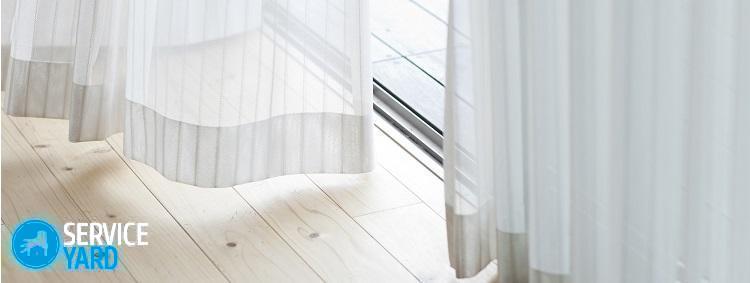
Nylon
Nylon is a delicate synthetic material. It needs gentle washing and gentle bleaching. Nylon can not be washed at high temperatures - a maximum of 30 degrees, the speed of revolutions should be no higher than 400.
It is also impossible to use industrial bleaches for this material, as they can play a cruel joke with it and spoil it irreparably. From folk remedies, you can use only those that provide a stable and reliable effect even in cold water.
Capron is not afraid:
- Washing and soaking in brine.
- Rinse in a solution of potassium permanganate.
- Rinses in a solution of brilliant green.
Important! Voile curtains created by weaving fine threads quickly get dirty. In order not to harm delicate fabrics during bleaching, wash curtains in water with the addition of hydrogen peroxide and ammonia (in a ratio of 1: 2). Let the tulle sit in the solution for half an hour, then rinse it thoroughly and let it dry.
Preparing any whitening composition at home will not take long, and the pleasant snow-white result will last for a long time. Consider the most popular bleaching recipes.
Important! Even a tulle or curtain that shines with cleanliness will look tasteless in the interior if it is rumpled or hung anyhow. Therefore, we also suggest that you familiarize yourself with interesting ideas and tips that will help you bring the interior of the room to perfection:
Bleaching tulle at home is the best way
In order for the nylon and organza curtains to acquire their original whiteness, use one of the simple but effective and effective recipes for cleanliness.
Salt
This method is suitable for a nylon tulle that has lost its appearance.
Important! Salt is a safe, non-allergenic product that can be safely used to whiten all fabrics in all areas, including the nursery.
To prepare a bleaching solution, you will need:
- 3-5 tbsp. tablespoons of coarse table salt.
- 100 g of regular washing powder (not necessarily bleaching powder).
- A basin of water.
Proceed as follows:
- Pour warm water into the basin.
- Dissolve salt and washing powder with water.
- Immerse the tulle in the resulting solution.
- Leave it to soak for 5 hours, preferably overnight.
- For stubborn dirt - machine wash on a delicate cycle, for light dirt - rinse the curtain.
Important! For prophylaxis, rinse the tulle in saline after each wash. Place the curtain in the solution for 15 minutes: 5 tbsp. tablespoons of salt per 5 liters of water. The salt makes the fabric crisp and crisp white.
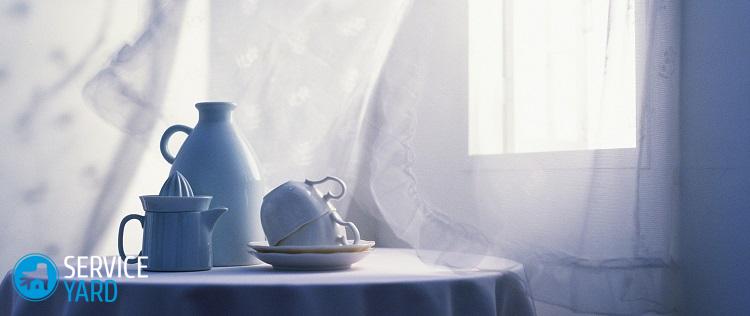
Blue
To use blue for rinsing, prepare a solution: dilute half a teaspoon of blue in 7-10 liters of warm water (up to 40 degrees). Be sure to make sure that there are no lumps of the product, otherwise, stains will remain on the fabric.
Proceed as follows:
- Hand wash the tulle.
- Rinse the curtain in the blue solution for 5 minutes.
- Rinse with clean water.
Important! If you are using a washing machine for bleaching, put a cap of blue stain into the rinse aid compartment.
Disadvantages of this method:
- It is very difficult to find blue in household chemical stores and chain supermarkets.
- If you don't stir the product thoroughly, stubborn stains will remain on the fabric. This is why it is better to use hand rinse.
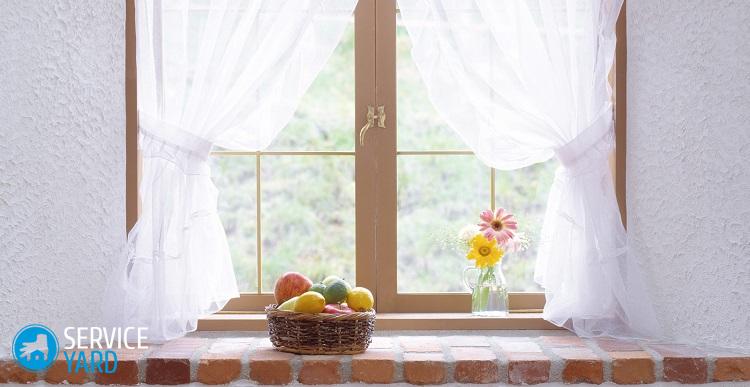
Zelenka
To whiten tulle from yellowness at home quickly, prepare the following solution:
- Dilute 5-10 drops of brilliant green with a glass of warm water.
- Place the container on the table.
- After 2 minutes evaluate the result: if you do not see any sediment, then the solution is ready and can be used for bleaching.
Use the solution as follows:
- Fill a basin with water (7-10 liters of warm water).
- Pour the brilliant green solution. If there is still sediment, then strain the solution.
- Mix thoroughly.
- Wash the tulle in the usual way.
- Place the washed rinse curtain in a basin of solution for 3-5 minutes.
- Flip the tulle several times to bleach evenly.
- Gently squeeze the curtain and hang to let the glass in the water.
The advantages of this method:
- The tool is very affordable and cheap.
- Whitening takes a minimum of time.
- The fabric becomes much fresher and whiter.
Disadvantage of this method: if you do not stir the solution of brilliant greens well enough, then the fabric will not acquire a snow-white shade, but light green stains, which are rather problematic to remove.
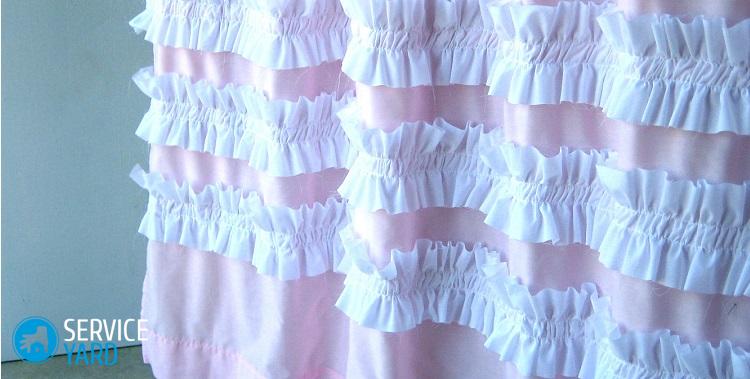
Hydrogen peroxide and ammonia
This method can only be used for cotton curtains. Peroxide with ammonia will perfectly clean kitchen tulle from yellow plaque, dust, grease and burning.
- 1 tbsp. a spoonful of ammonia.
- 2 tbsp. tablespoons of 3% hydrogen peroxide.
Instructions for use:
- Fill a basin with water heated to 60 degrees.
- Add ingredients and mix thoroughly.
- Dip the fabric in there for 20-30 minutes.
- Rinse the tulle.
- Squeeze (do not twist).
- Hang to dry.
Important! This method is not suitable for bleaching synthetic fabrics.

Potassium permanganate
This method was used by our grandmothers to bleach nylon tulle at home. It is considered one of the most effective.
To prepare the solution, you will need:
- Laundry soap - 100 g.
- Potassium permanganate.
- A glass of water for diluting the product.
Use the ingredients as follows:
- Fill a basin with warm water.
- Grate laundry soap and add water.
- Stir the soap solution well.
- Dissolve a small amount of potassium permanganate with a glass of water.
- Make sure there is no sediment at the bottom of the glass, pour the solution into the basin.
- Whitening water should be light pink with a little lather.
- Wash the tulle beforehand.
- Dip the cloth into the cleaning solution.
- Leave it on for 30 minutes.
- Rinse the curtain.
- Hang to dry.
Advantages of the method:
- An excellent result that lasts long enough.
- Whitening takes a minimum of time.
Disadvantage: Finding potassium permanganate is quite difficult.
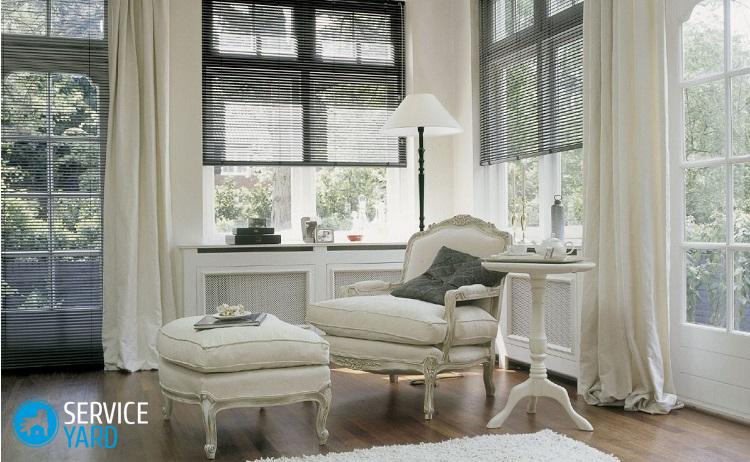
Laundry soap
Use a soap suitable for washing white items:
- Grate the soap.
- Add to a pot of water.
- Bring the soapy water to a boil.
- Remove the prepared solution from the stove.
- Mix the contents with cool water.
- Soak the yellowed curtain with warm solution for 5-7 hours.
- Hand wash the tulle.
- Rinse thoroughly.
Starch
This method can be used to bleach nylon tulle and organza curtains.
Proceed as follows:
- Remove any dust from the tulle.
- For stubborn dirt, wash the curtain.
- Dissolve 250 g of starch in a bowl of warm water.
- Dip the washed tulle in there for a few minutes.
- Rinse the curtain with water.
The curtain will not only get rid of grayness and yellowness, but it will also keep its shape well in the future, and dust particles will settle not on the fabric, but on the starch, which will facilitate further washing of the curtain.
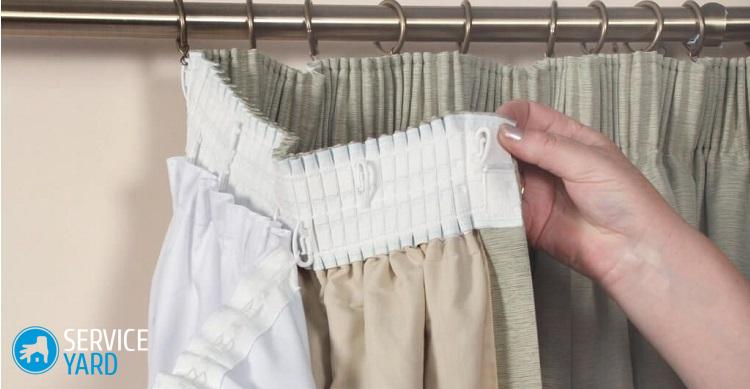
Soda
Like salt, soda is present in any kitchen, so it can return the curtains to their original whiteness at any time.
Use baking soda to pre-soak before machine wash in this way:
- Add 50 g of washing powder and 1 tbsp to 4-5 liters of water. a spoonful of soda.
- Stir the solution thoroughly until the powder grains are completely dissolved.
- Soak the tulle with this composition for 20 minutes.
- Transfer the curtain to the machine and wash on the delicate cycle.
- Rinse thoroughly.
Important! Soda is another universal remedy, the use of which in everyday life is practically unlimited. Read about how it can be beneficially used to solve certain household problems in our articles:
Lemon acid
With the help of citric acid, you can wash products that are heavily soiled and gray from time to time.
Instructions for use:
- Lather the curtain thoroughly with laundry soap.
- Soak the soapy tulle in hot water.
- Add 2 tablespoons to 5 liters of water. tablespoons of hydrogen peroxide if the curtain is covered with smoke.
- Leave the product for half an hour.
- Rinse with warm water and a sachet of citric acid.
Important! Citric acid is an excellent descaler for various household appliances. In this case, you can use it to.
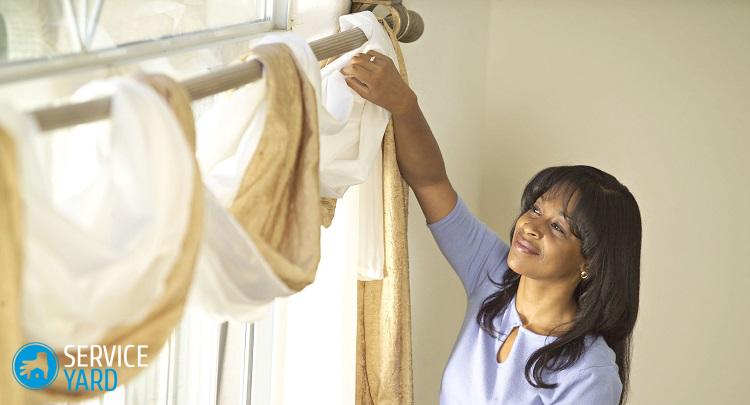
How to bleach old nylon tulle at home?
It is quite difficult to return an old curtain to its original whiteness. In this case, an integrated approach is needed.
To reanimate burnt and gray material, carry out the following procedures:
- Thoroughly shake out dust from curtains.
- Machine wash curtains.
- Boil the tulle in a strong soapy solution for an hour.
- Soak with hydrogen peroxide solution.
- Rinse with brine.
- Fix the effect by rinsing in lukewarm water with the addition of 200 g of starch.
How to bleach tulle in a washing machine?
To bleach tulle effectively, follow these tips:
- Before washing the curtains, be sure to shake them out of the dust.
- Soak curtains that are too dirty with soapy water or hot water and salt (4 tablespoons of salt per 5 liters of water) overnight.
- Wash curtains on a delicate cycle and a water temperature of 30 degrees.
- For bleaching with a washing machine, ordinary washing powder and 2 drops of ammonia are suitable. An alternative to ammonia is 5-10 tablets of hydrogen peroxide.
- You can add chlorine-free bleach to your washing machine.
- Wash the curtains by folding them several times to the size of a small rectangle. We recommend putting the folded curtain inside a special bag so that the fabric does not deform, and at the same time it will help facilitate the ironing process after washing.
- When rinsing, add 2-3 drops of greenery to cold water.
- Do not use the spin function in the washing machine.
- After finishing washing, wrap the curtains in a white sheet and squeeze slightly without twisting.
- Hang wet curtains on the curtain rod to dry.
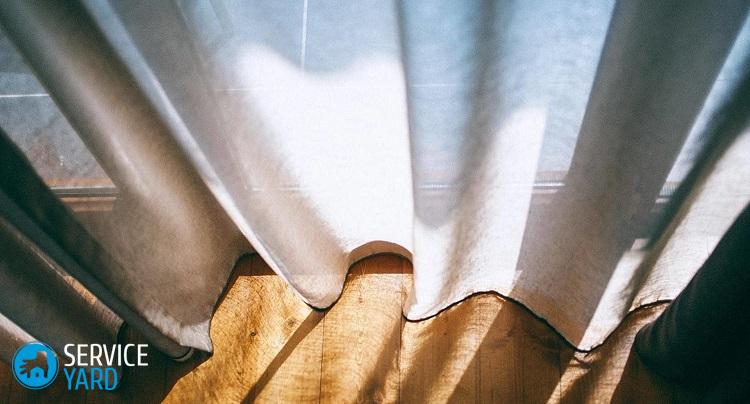
For the most effective curtain whitening, follow these guidelines:
- To prevent dust and dirt from absorbing into the fabric while soaking, shake out the curtains.
- For soaking, washing and bleaching, use only warm water (no higher than 35 degrees). At high temperatures, yellowness eats into the fibers of the fabric and it is almost impossible to remove it.
- Remember that slight color changes are much easier to remove than old ones. Apply whitening measures immediately at the first sign of discoloration.
- Be sure to wash it before bleaching the tulle at home. When hand washing, do not rub the fabric, just squeeze it lightly.
- In order for the tulle to acquire a beautiful shine and shimmer in the sun, add a little table vinegar to the washing water (for 1 liter of water - 1 dessert spoon).
- If the nylon or organza tulle is new and you are washing it for the first time, add the required amount of liquid commercial bleach to the water. The next time it is impossible to use chemical bleaches for curtains, since after the second wash with the agent, the fabric will acquire not a snow-white, but a yellow tint.
- After washing, do not twist the curtains by hand or use the Spin function in the machine. Wait for the water to drain from the tulle and hang the curtains that are still damp on the windows. Let the folds straighten out under the fabric's own weight.
- Do not iron the tulle. If ironing is still necessary, then use the lowest temperature, otherwise, synthetic fibers may acquire yellowness, which will be impossible to remove.
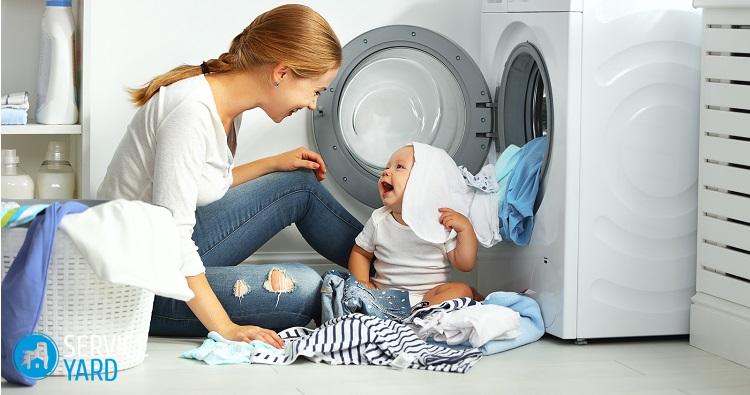
Safety engineering
Even at home, you should never forget about safety precautions. To protect your hands and curtain fabric from possible unpleasant surprises, adhere to the following rules:
- Carry out all whitening procedures with special gloves.
- Strictly follow the drug instructions and dosage.
- Do not experiment with mixing substances. For example, hydrogen peroxide cannot be mixed with brilliant green, as it contains alcohol and neutralizes the action of brilliant green. Soda and brilliant green also neutralize each other, and household bleach in combination with ammonia or soda can produce harmful fumes.
- Avoid using chlorinated water in the bleaching process and never use hydrogen peroxide with chlorinated water.
As you can see, washing and bleaching tulle is not as difficult as it might seem at first glance. With a minimum of time and effort, you will decorate the windows with snow-white, flowing tulle and create coziness throughout the house.
